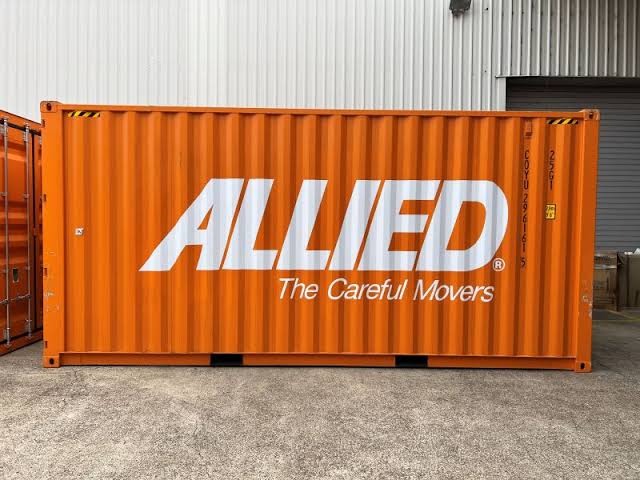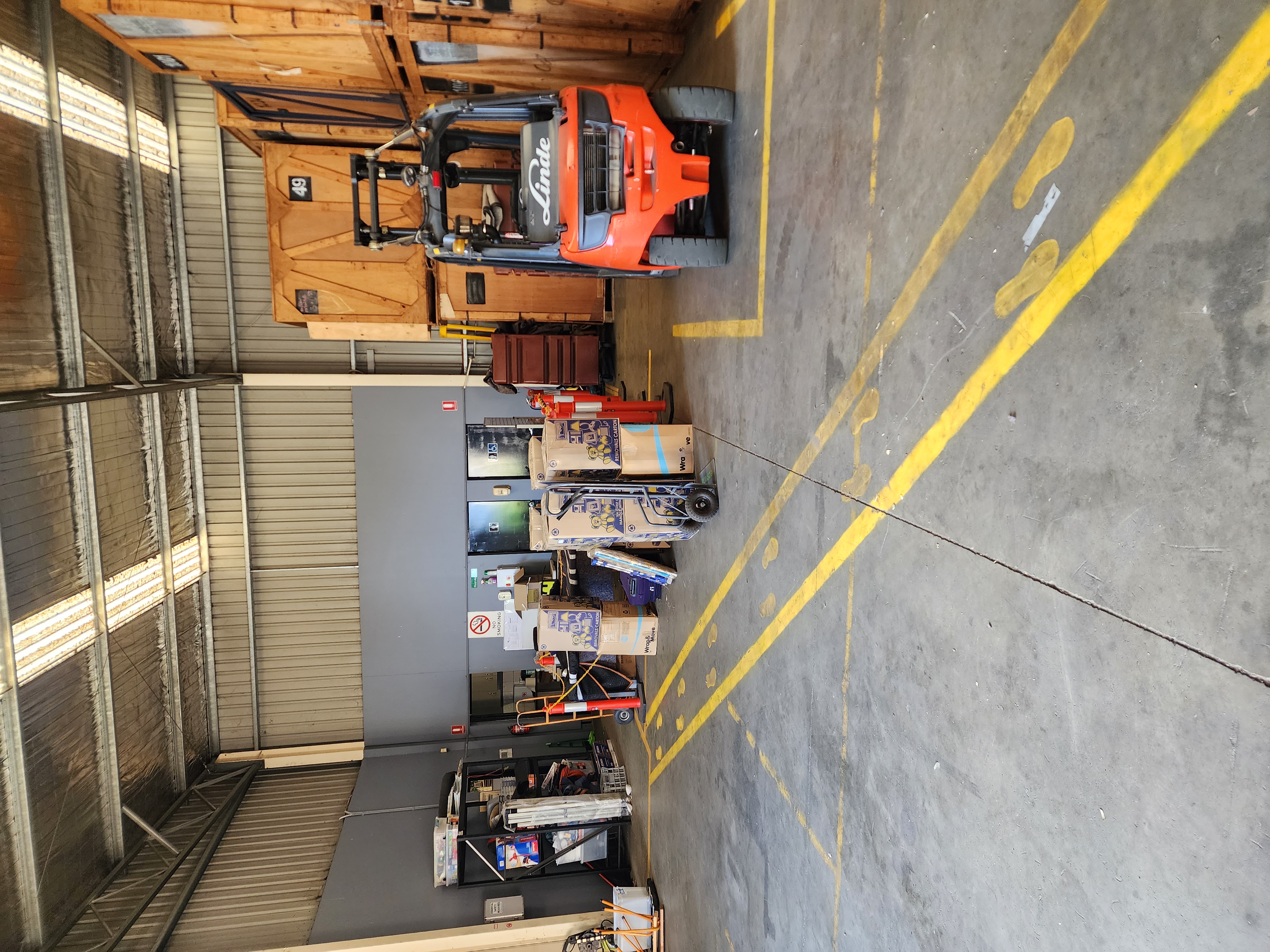Title Page
-
Site conducted
-
Location
-
Conducted on (Date and Time)
-
Inspected by
General Inspection
General Information
General Warehouse Areas
-
Is the floor clear and open for equipment and personnel? <br>• No item shall be stored where it blocks equipment maneuvering or doorways.
-
REFERENCE: Clean floors. No materials are stored in walkways.
-
Are floor and rack storage limits properly posted? <br>• One sign near the entrance of the warehouse should indicate the floor rating. <br>• All racks should be labeled with load ratings.
-
Are rack uprights and beams in good condition? <br>• Bent racks and beams must be repaired or replaced. <br>• All racks should be bolted to the floor.
-
Are designated open areas clear of blockage? <br>• Yellow guidelines are adherred to?.
-
Are fire extinguishers and fire hose up to date for inspections and in good condition?<br>• Make sure access is clear
-
Are all emergency exits clear of blockage and are the exit signs in good condition? <br>• Inspect both inside and outside for blockage of the exits. <br>• All exit signs should be lit & all emergency lights tested.
-
Are all homepacks in good condition? <br>• Dismantled homepacks must be stored properly. <br>• No broken or protruding wood or nails. <br>• No overhanging/unbalanced homepacks
-
Are overhead lighting, skylights, and roofs in good condition? <br>• Check for leaks, broken panels/light bulbs, and missing bulb shields.
-
Are loose/unboxed materials stacked properly?
-
Are all bags, containers, bundles, etc. stored in tiers that are stacked securely and limited in height? <br>• Stable and secure to prevent sliding or collapse.
-
All hazardous materials' containers are properly labeled?<br>• Indicated chemical’s identity, the manufacturer’s name and address, and appropriate hazard warnings.
-
Are all employees using the proper lifting technique for materials being handled?
-
Products and containers that are most frequently moved by hand are stored at rack heights that minimize bending / stooping or excess reach to pick up or place?
Dock Areas (Exterior and Interior)
Dock Areas (Exterior)
-
Are approach roads and staging areas (yard) clear for maneuvering, well drained, free of potholes and are all signs in place and legible?
-
Is the approach to the warehouse well drained and free from potholes or other obstructions? <br>• Pay particular attention to ice, storm water and debris build up.
-
Are containers and trailers left with appropriate clearance?
-
Are all exterior lights working properly? <br>• This item will need to be inspected during the evening when lights are functioning.
-
Are wheel chocks and/or trailer restraint systems working properly? <br>• If trailer restraint systems are in use remember to inspect for proper locking and indicator light function both inside and outside.
-
Is yard security intact? (i.e no damage to fences or gates and functioning locks)
Dock Areas (Interior)
-
Are visitors and drivers remaining in designated safe areas and walkways?
-
Are all interior overhead lights and trailer lights in the dock area operating properly? <br>• Test all lights that might be off at time of inspection to be sure they work properly
-
Do dock doors work properly and close completely? <br>• Ensure that all doors in use open and close smoothly. <br>• Inspect automatic stops and auto-reversing functions on powered doors
-
Are dock doors closed when not in use? <br>• Closed doors should seal well with the floor and dock leveling plate.
-
Is there sufficient room to maneuver materials? <br>• Dock area floors should be clean and free of trash, debris, or stored items that block the safe passage of loaded equipment
-
Are there sufficient waste cans for the area and are those cans properly labeled and emptied on a regular basis? <br>• In general, floors, ceilings, and exhaust fans are clean and free of cobwebs and dust buildup.
-
Is there adequate natural or mechanical ventilation to control any potential atmospheric hazards? <br>• Where propane-powered equipment is in use, the ventilation must be tested to rule out excess carbon dioxide/monoxide. An Industrial Hygienist may need to do testing.
Equipment Check
Equipment Checks
-
Are all ladders and hand tools are in good condition? <br>• Remove any unsafe equipment from service while awaiting repair.
-
Are forklifts being operated safely and inspected at the start of every shift? <br>• Observe powered industrial truck operations and review training certifications to confirm operators have been adequately trained and evaluated.
-
Do forklifts have functioning warning devices such as back-up alarms, strobes, or horns? <br>• Test equipment as needed, report repairs,and tag out equipment that is unsafe until repairs are made.
-
Are gas/diesel tanks stored correctly?<br>• Appropriate signs are in place and area is free of trash.
-
Are all powered industrial trucks (i.e. forklifts) meet the design and construction requirements established in regulatory standards?
-
Are the original capacity, operation and maintenance instruction plates, tags or decals on powered industrial trucks in place and legible?<br>• All authorized equipment and accessory modifications are also identified on those labels/tags/decals.
Sanitation
Sanitation Inspection
-
Are rodent and other pest control devices in place and in proper working condition? <br>• Look for missing or damaged traps and check fly zappers as well.
-
Are aisles, wall perimeters, exterior areas near the building, trash cans and dumpsters free of loose trash and debris?
-
Are stored products in good condition and free of spillage / breakage?
-
Are the storage areas free of pests? <br>• Look for signs of pests such as dead insects, container damage caused by feeding, droppings, feathers, etc.
Training & General Safety
Training and General Safety
-
Are all employees properly trained and is training and certification up to date? <br>• Inspect records to verify training is documented and up to date.
-
Are emergency evacuation routes and guidelines posted?
-
Are the appropriate posters posted in a conspicuous place?
-
Are accidents, near misses and injuries being investigated and are unsafe conditions being corrected, reported/documented in a timely manner?
-
Are location security process and equipment in place and operating well? <br>• Inspect identification badges, uniforms, and intrusion alarms. <br>• Verify monitoring services and equipment tests.
-
Is employee training documented?
Completion
Recommendation
-
Write recommendations here
Completion
-
Full Name and Signature of Inspector







